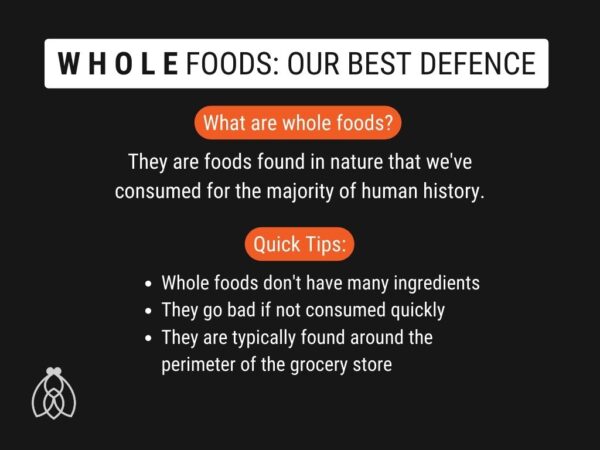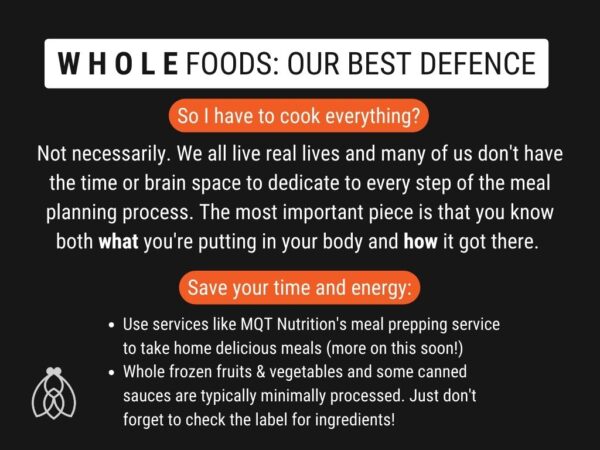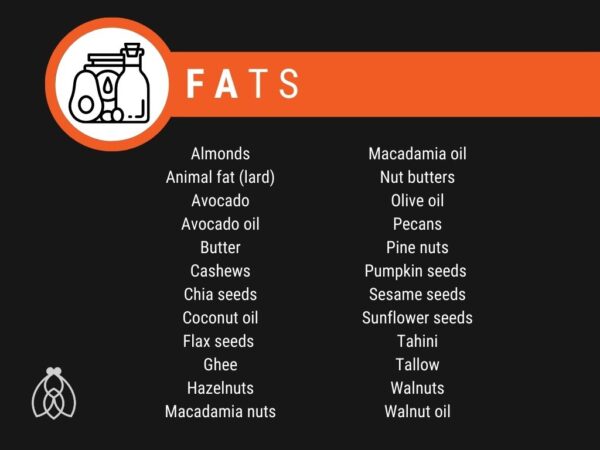BlackFly CrossFit Nutrition
Fall 2022 Nutrition Challenge
For many of us, we invest a lot in physical exercise as a way to improve our lives in one way or another. By spending hours of our week putting in the physical work required to make these improvements, we feel as though we’re doing all we can to ensure our health is a priority. However, there is an important piece which may become neglected; a bridge between our health and fitness: Nutrition.
BlackFly has an incredible group of people (our members and trainers) who come together to do amazing things every day. We challenge, support, and encourage each other to do hard things to better ourselves and the gym. Since there is such a pivotal connection between fitness, health, and nutrition, we think it’s time we all consider challenging, supporting, and encouraging each other to fuel our bodies in such a way that supports the level of exercise we partake in. So, let us provide the challenge.
First, let’s go over what this Nutrition Challenge entails.
THE C H A L L E N G E
Sometimes we wish we got more out of our training and it’s important to recognize the impact that nutrition has on our progress in life and at the gym. Good nutrition habits, however, become stronger the more we work at them and they take time. This nutrition challenge is meant to do a few things: to challenge you, to make sustainable change more manageable, and to surround you with other people pursuing that common goal just like we do in our classes every day.
This challenge will run for 6 weeks, is open to all BlackFly members, and we will be providing education on the “how” and “what” of nutrition before and during the challenge. If at any point you have questions or are lost at where to start, you can reach out to us and we will be happy to help!
If you have concerns about a medical condition, make sure you check in with your medical provider and provide them with these details before participating.
THE T R A C K S
Ideally, your diet would take all of the below components into account, however, we know that’s not always an easy change to make. For this challenge, let’s focus on that one thing you find yourself struggling to maintain or the one thing you feel confident changing as an introduction to better nutrition.
Pick ONE of these “tracks” to follow during the challenge:
1.) Protein – eat 1g of protein per lb of body weight, daily
2.) Sugar – consume less than 10g of added sugar, daily
3.) Vegetables & Fruit – eat 8 cups of mostly vegetables, some fruits, and little starch, daily
4.) Alcohol – no alcohol during the challenge
5.) Oils – no vegetable oils or industrially processed seed oils during the challenge
If you get stuck on which to choose, scroll down to read a little bit more about important considerations for each track.
TO W I N
It’s important that we look at changes in our nutrition habits as a “long game”. There will always be holidays, birthdays and special occasions which don’t always fit into goals we set for ourselves but that doesn’t mean we shouldn’t still set them. For this reason, points are earned daily and this is not an “all-or-nothing” challenge. Here is how you earn points:
1.) 3 points for each day you stick to your nutrition “track”, logged in Beyond the Whiteboard*
2.) 2 points for each CrossFit Class or Open Gym you attend, reserve your spot in Zen Planner**
*If you are not using Beyond the Whiteboard, directions for how to join can be found on the gym Leaderboard by the entrance to the gym. If you do not have a smart phone to use, we will provide a paper logging sheet for you to use instead. Please see a trainer no earlier than 10/31 to receive this logging sheet.
**One Class/Open Gym per day.
THE P R I Z E S
Everyone who commits to this challenge can look forward to improvements in their general health and wellbeing, however, we want to go a step further. The top two challengers with the most points will be added to our Hall of Fame as our first-ever SuperFly Challenge Winners and they will receive exclusive SuperFly merch only gifted to challenge winners which will be announced during the challenge.
THE D E T A I L S
1.) Sign up by: Monday, October 31
2.) Challenge Dates: Tuesday, November 1 – Tuesday, December 13 (6 weeks)
3.) Cost: $5, charged to your Zen Planner account or paid in cash at sign-up, to help cover the cost of the challenge
To sign up, please fill out this Google Form. The form will be taken down at the end of the day on Monday, October 31.
MORE I N F O R M A T I O N
General Considerations
You are your best science experiment. When it comes to the food you eat, you are in control. CrossFit’s guidance for nutrition provides a great overview of what we should all aim for in our consumption of food:
Eat meat and vegetables, nuts and seeds, some fruit, little starch, and no sugar. Keep intake to levels that will support exercise but not body fat.
Furthermore, we hope that this challenge leads to us all taking more time to evaluate the role of processed foods in our diets as excessive consumption of processed foods may lead to chronic diseases through insulin resistance and hyperinsulinemia.
So, what is a processed food? Technically, it’s any food that is bought in anything other than it’s most raw form. Sometimes the processing has little impact on the nutritional value of the food like in the case of many frozen or canned fruits and vegetables without any other added ingredients. However, in the case of potato chips, hot dogs, deli meat, frozen meals, and other hyper-processed foods, there are many added ingredients used to preserve the food for long periods of time along with questionable oils and other ingredients used in the preparation process. Take this challenge as a time to evaluate what’s on your plate and how it got there. For more information on how to read food labels, click here.
When we talk about balancing our nutrition, CrossFit recommends a starting ratio of 40%/30%/30% for carbohydrates/protein/fat in our daily nutrition, to start. This balance should be maintained during each meal, not just each day. This will help you maintain a healthy energy level throughout the day and support good insulin sensitivity.
Good, Better, Best
There will always be a “better” way to eat. Some of us will start with the goal of just balancing our nutrition. For others, it will be about learning more about the science of food and its impact on our active bodies. For a few of us, we will also want to take ethical considerations into account. Let us be clear: the best “diet” you can have is one in which you feed yourself. Changes to how we eat can take time and they are impacted by economical, familial, and other outside forces. You invest in your fitness every time you spend time at BlackFly, now let’s bring that same care home and remember that we all have to start somewhere.
Alright, let’s go over the tracks in more detail to help you determine which track may be both sustainable and most beneficial for you:
Track 1: Protein
Protein is one of three important macronutrients we need in order to support the level of fitness we are participating in, with the others being carbohydrates and fats. For most of us, it should take up roughly 30% of our macronutrients per day, as a starting point. Protein comes from many sources including animal sources (meat, eggs, seafood) and non-animal sources (tofu, tempeh, beans, and lentils). Protein is important because it is made up of amino acids which are the building blocks for many things in our bodies. In our case, let’s focus on muscles. If you’re not consuming enough protein, you will find it difficult to increase your muscle mass the way many of us would like. It’s important to note that increasing your protein intake does not mean leading a low carbohydrate diet. As with all things concerning this challenge, we’re searching for better balance and better choices.
For this challenge, focus on whole, lean protein sources. Just as we all like our workouts, make your sources of protein constantly varied to ensure you’re maximizing your vitamin and mineral intake. Calculating grams of protein can be time consuming when you first start. Investing in a starter kitchen scale is essential to calibrating your protein intake to be as accurate as possible. This is a simple scale to get you started. Remember, grams of weight is not that same as grams of protein. This is a great site to use to figure out the protein content in common foods.
Track 2: Sugar
Americans consume, on average, 57 lbs of added sugar per year and ideally, we would cut out all added sugars from our diet. Added sugars negatively impact our gut bacteria and important hormones like insulin. However, we know that out of convenience and preference, that may be difficult for some. The goal with this track is to learn how to identify the way added sugars are labeled in food and the surprising places you may find them hiding! Did you know that there are 61 different names for added sugars? Artificial sweeteners like Sucralose and aspartame are also included as added sugars on this track.
Added sugars can be tricky to find on a food label, however, new labeling requirements have forced food producers to disclose the amount of added sugar in foods. If you take into account your serving size and the amount of added sugars therein, you will have the information you need to successfully participate in this track. For more information on how to read food labels, click here.
Track 3: Vegetables & Fruit
CrossFit’s guidance for carbohydrates calls for plenty of vegetables, some fruit, and little starch. Vegetables should make up the bulk of this track as they are a significant source of fiber, they contain many vitamins, and minerals, and some vegetables also contain nontrivial amounts of protein. Fruits, when consumed in moderation, also contain a lot of the same important nutrients. However, fruits should make up less of this track than vegetables due to the naturally occurring sugars found in fruit and the impact on insulin sensitivity as well as moderating higher-density carbohydrate intake. Foods high in starch, such as grains, potatoes, and legumes, should make up the smallest portion of this track to moderate higher-density carbohydrate intake.
Track 4: Alcohol
Overconsumption of alcohol can lead to a slew of health concerns including cirrhosis of the liver and damage to several large organs in your body. Additionally, reliance on alcohol can enforce damaging mental barriers which get in the way of us dedicating our energy to pursuing fitness. This track is important for recognizing the impact each individual component of our diet has on our overall health. Alcohol is empty of nutritional value and overconsumption draws energy away from making healthy choices in other aspects of what we consume.
If you feel as though alcohol is something you rely on, we want you to feel supported by your BlackFly community in your pursuance of sobriety. Here are some local resources which may be helpful to you:
Alcoholics Anonymous of Marquette County
Great Lakes Recovery Centers Outpatient Services
Pathways Community Mental Health – Marquette
National Institute on Alcohol Abuse and Alcoholism
Track 5: Oils
Vegetable oils and industrially processed seed oils are produced using high heat, chemical bleaching, and deodorizing which leaves us with a product that is stripped of any nutritional value and leaves behind chemical residue and trans fats. Examples of these undesirable oils include canola, corn, cottonseed, soy, sunflower, safflower, and grapeseed. These oils are found in abundance in processed food and are commonly called for in easy-to-bake mixes. Unfortunately, these oils have an imbalance between omega-6 and omega-3 fatty acids. Omega-6 fatty acids are inflammatory by nature and when not properly balanced with omega-3, this can lead to a concerning level of inflammation in the body. Instead, when oils are used, preference should be given to animal fat (lard) or tallow, butter (whole dairy), avocado oil, coconut oil, ghee, macadamia oil, olive oil and walnut oil.
By committing to this track, you’ll become more comfortable reading and interpreting food labels, and you may find that you find yourself drawn to eating whole foods due to the presence of these less desirable oils in even minimally processed foods.
Check back here for further information as we get closer to the beginning of our challenge!






